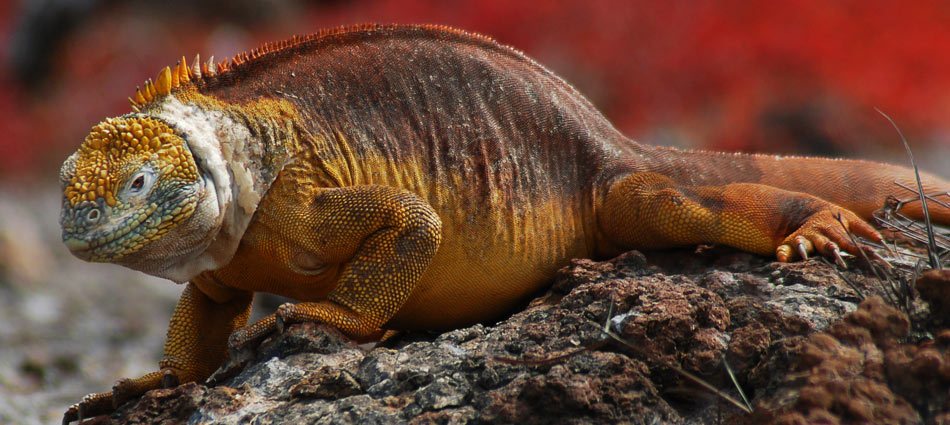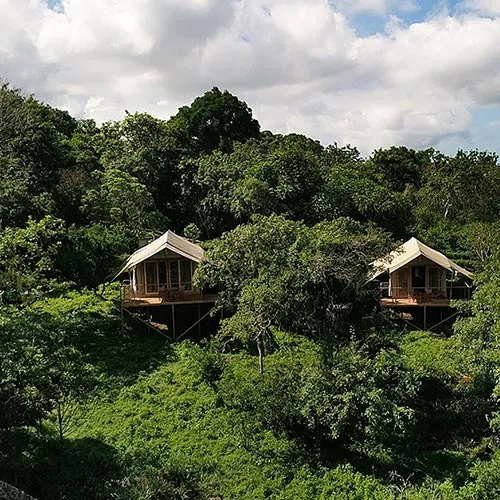
Darwin and Iguanas
Darwin was no fan of lizards. On his visit to the Galapagos, he famously called marine iguanas “imps of darkness” and wasn’t particularly flattering about land iguanas, which he described as “ugly animals, of a yellowish orange beneath, and of a brownish-red color above: from their low facial angle they have a singularly stupid appearance.”
The Prehistoric-looking Iguana
As time passed, however, other household metaphors have taken hold of the English language and today, no visitor on a tour would resort to words like “imp” when confronted with the vision of a Galapagos iguana. They would most certainly use the word “dinosaur” to describe it. And land iguanas certainly do look a lot like dinosaurs. They are very large reptiles, some reaching almost two meters in length. Their scaly crests and spines, their antediluvian muzzles… Prehistory in the making!
How Iguanas Evolved
Land and marine iguanas are thought to have sealed their respective evolutionary divorce eight million years ago. Scientists speak of an ancestral “imp” from which they evolved, which may have crossed the Pacific Ocean from coastal South America by raft (riding on vegetable matter that floated all the way to the archipelago). The theory suggests that these original ancestral iguanas actually reached islands that have since receded into the ocean (due to tectonic plate movement) and that evolution worked its magic from that point forward.
The Hybrid Iguana
The island of Plaza Sur, in the centre of the Galapagos archipelago, is the only place in the world where both iguana species are bound to share the same living space. The islet is very small and there is nothing separating the species’ communities. The result is the presence of a hybrid iguana, a cross between the marine and land iguanas. On your Galapagos tour to the South Plaza visitor site, you will notice individuals that share physical characteristics with both species!
The Santa Fe Iguana
Land iguanas are found on many islands. Most belong to the Galapagos Land Iguana species. Yet nothing is as simple or quite as it seems in nature here in the Galapagos, and the land iguana is no exception. Land iguanas on Santa Fe, for example, have long been considered a separate species, with the scientific name Conolophus pallidus, which refers to the evident off-white coloration of its skin (land iguanas on the rest of the Galapagos Islands, as Darwin described, are almost dark yellow). Yet researchers —who have even gone through the trouble of testing the DNA of land iguanas on different islands —have found that the Santa Fe Land Iguana may actually be related to some of the land iguanas on other islands. These suggestions may even end up in further splits in the species’ genealogical tree.
The Pink Land Iguana
The third land iguana species in the Galapagos, which you will unfortunately not be able to come across on a Galapagos tour since the area where it lives is not accessible, is the recently described Pink Land Iguana (Conolophus rosata). This species inhabits a very particular volcano on Isabela Island. The existence of this beautiful pink lizard is a testimony to the fact that discoveries are always possible in a place like Galapagos, and that there is never a dull moment (either for scientists or visitors)!
Plan your Galapagos Vacation!
See our Safari Holidays for our suggested Galapagos itineraries and recommended activities.
